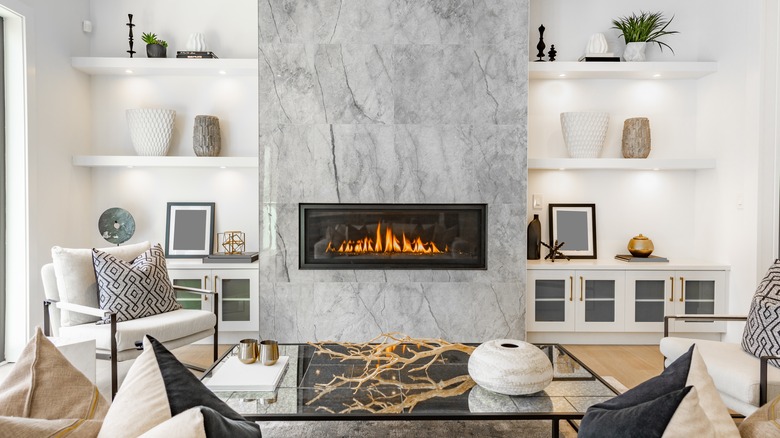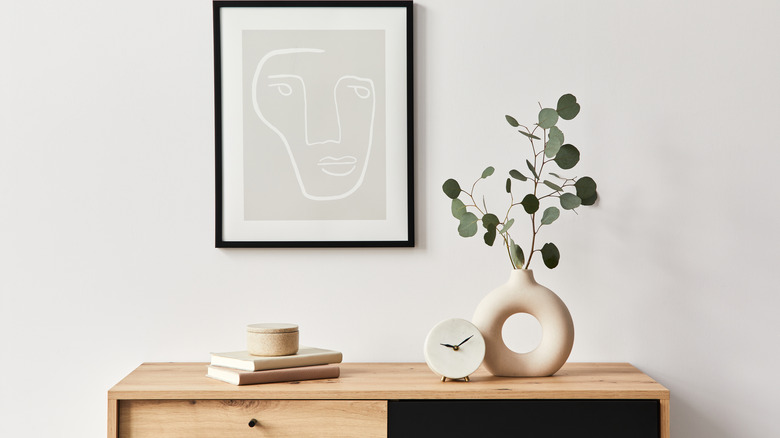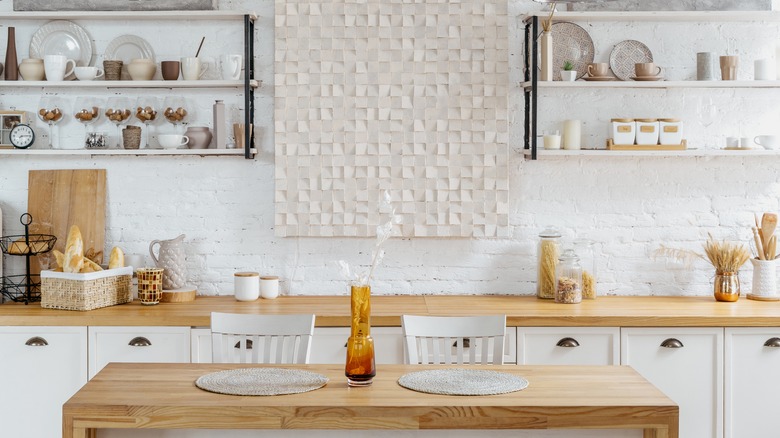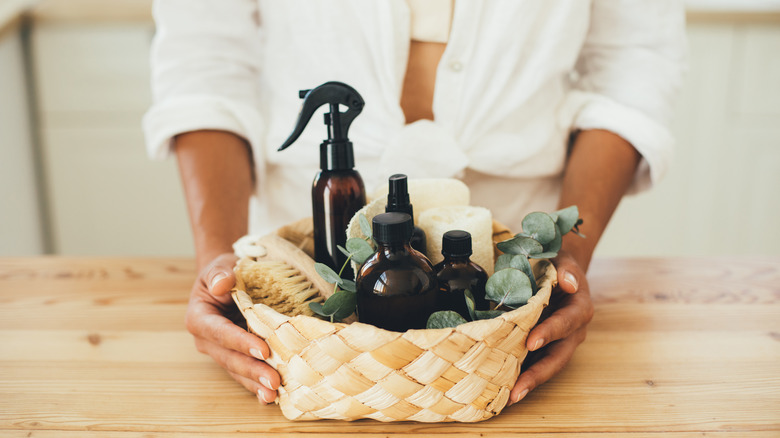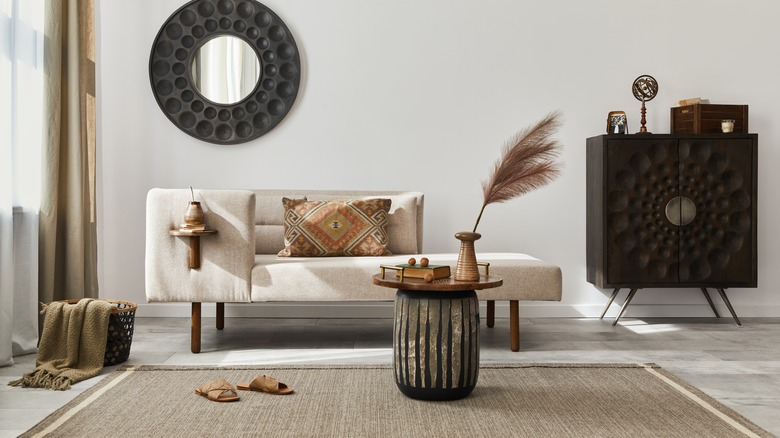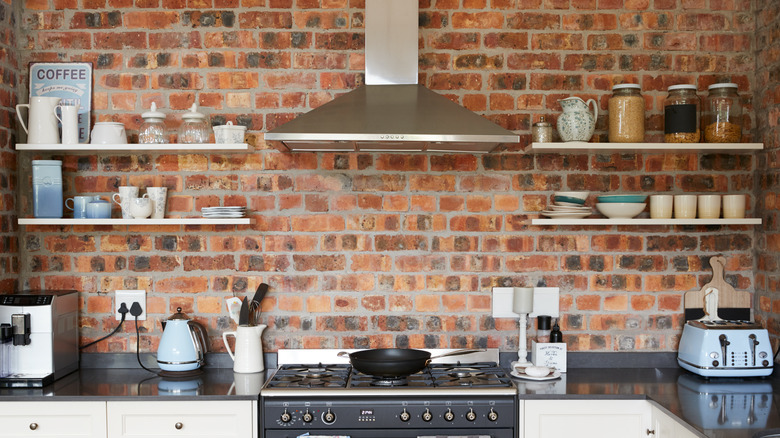5 Tips For Bringing More Organic Décor Into Your Home
Our feeds are flooded by folks who decided to pour their time, money, and energy into sprucing up their spaces. Thanks to people's thirst for new, retailers saw a sharp spike in décor sales in the last few years, reported Forbes. As a result of spending more time at home, creating organic, natural spaces is having a moment as folks try to move away from the days of generic acrylic and pastel-lacquered Ikea furniture. While you may not have a bottomless budget for redesigning your house, and perhaps your rental agreement may restrict you, you can still create a cohesive, harmonious space you'll love to spend time in.
With a few tips and tricks, we'll guide you through bringing in natural, organic décor. Beyond just a few principles, we'll also include budget and renter-friendly design options to fit any lifestyle. If you're ready to make your home into a retreat, read these five easy décor and design tips.
1. Leave it to greens
If you've ever been walking in a bit of parched desert and have seen a bright green bush in the distance, you know just how inspiring, and uplifting green plant life can be. That's why Millennials and Gen Zers alike have taken on the role of plant parents. Bringing verdant potted plants into the home makes the space feel relaxed and spa-like. In addition, according to Verywell Mind, green can cause psychological responses, like a sense of calm, tranquility, and motivation.
You can use dried greenery if you don't have a green thumb (or a tight budget) like eucalyptus or olive branches. There are also a number of live plants to choose from — some of the most popular potted houseplants are monsteras, snake plants, and lucky bamboo. Even if you don't have a ton of natural sunlight, plenty of florae thrive in low light conditions and can add a pop of color to a space, so check out this list of the best low-light plants to grow indoors. Consider adding potted greenery to areas that may be lacking character, like the bathroom, guest bedroom, or dining room.
2. Own the natural wood tone
Letting natural and raw wood tones shine is a great way to add warmth to a space. While furniture flippers often opt for covering up natural wood with a coat of paint, consider a nice stain instead. A rich coat can breathe new life into wood furniture, and you can condition and sand the wood to make it look new. Plus, as ReSawn Timber Co. notes, natural wood can actually improve indoor air quality.
Butcher block countertops are gorgeous, though expensive and high-maintenance ways to introduce natural wood tones. You can find amazing wood furniture and home décor accents at your local thrift store. Even if a coffee table, dresser, or chair seems badly distressed, a little TLC can shine it right up. Even if you don't have the budget for new furnishings, consider snagging a couple of wooden cutting boards to use in the kitchen or as a stylish tray in your living spaces. Bamboo is also an affordable alternative to solid wood.
3. Sustainably on trend
Fast fashion isn't just a problem in the clothing industry — home design is also a major contributor to excess waste. As of 2018, the EPA reported that a person throws away 4.9 pounds of solid waste in the trash per day! Choosing to buy sustainably made products and upcycling décor can help reduce this impact, and buying high-quality, durable, and reusable items help keep your purchases from ending up in a landfill.
Working with recycled materials like wood and stone slabs is a great choice for those who are renovating or building a new home. But even if you are just working with a budget, small changes like using glass bottle cleaning and body products, bamboo baskets and hampers, and other natural, durable décor and home essentials are great ways to reduce plastic use. Plus, these are often much more attractive and give rooms that je ne sais quoi.
4. Let the sun in
Nothing beats the crisp, warm beams of sunlight draping themselves over your home. Natural light makes the toasty colors of the room pop. Plus, there are numerous health benefits of natural light, like improved sleep and keeping seasonal depression at bay, per Healthline. And if you've taken our advice and gotten yourself a few potted plants, you'll definitely need plenty of sunshine.
If you're building a home or adding new windows to your house, the best way to get natural sunlight in is by creating a south-facing window. This will optimize your hours of sunshine. But you still have options if you are renting or just trying to get more light in without spending a lot. First, ditch the blackout curtains. Instead, opt for a gauzy linen or cotton drape, or at the very least, have a wall hook installed so you can easily move the curtains out of the way. If you have the dreaded vertical slat blinds, you can remove them or cleverly disguise them by pushing them to the side and covering them with curtains.
5. Rock (or brick) on
When you move into a new home, you may have the blessed fortune of taking down a plaster wall and finding a hidden brick wall. Or maybe you've got a place with a very '70s natural rock wall. While cookie cutter design would push you to cover these features up, an organic designer would lean into these elements and try to highlight them.
Brick and stone are extremely earthy and can add a ton of character to the room. And while the many trends require a slab of paint over these features, consider leaving them as is, as it is nearly impossible to remove paint from brick and rocks, as noted by Blythe Building Company.
Don't lose heart if you are in a builder-grade house or new-build apartment. You can use wall panels like a faux brick wall treatment. If you are desperate for that exposed brick, industrial but organic look but renting and on a serious budget, look for peel-and-stick wallpaper.
